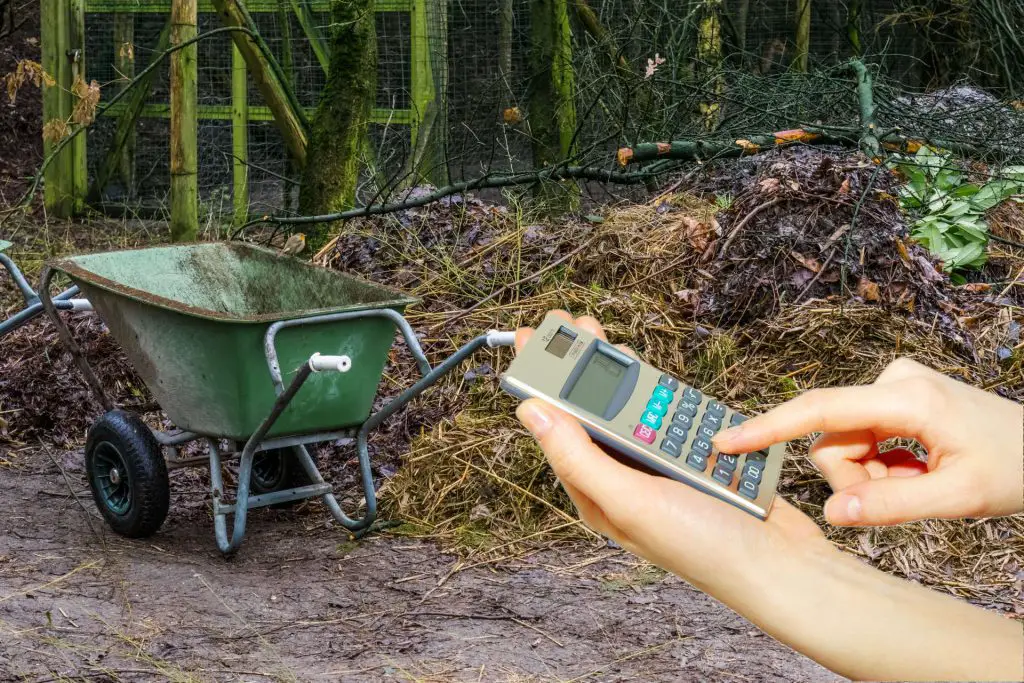Compost Carbon to Nitrogen Ratio Calculator | Get Green and Brown Materials Mix Right
Are you looking to supercharge your composting game using the correct mix of green and brown materials is crucial to your success. Finding the carbon-to-nitrogen ratio, often abbreviated as the C : N ratio can be difficult to work out on the fly without a calculator.
To help we have provided you with a handy tool to ensure your compost mix is the rato you need for the type of composting you are planning, be it cold composting or hot composting. In this comprehensive guide, we’ll take you from composting novice to C : N ratio master, ensuring your compost pile becomes a powerhouse of nutrient-rich soil for your garden.
Compost Carbon to Nitrogen Ratio Calculator
Why Does the C : N Ratio Matter?

Understanding the importance of the C : N ratio is crucial because it directly affects the decomposition process. In general:
- The higher the carbon content, the slower the decomposition process.
- The higher the nitrogen content, the faster the decomposition process.
Achieving the right balance ensures that your compost pile doesn’t turn into a slimy, smelly mess or a dry, lifeless heap. Let’s explore this further.
Finding the Right C : N Ratio
The Magic Number: 30:1
For optimal composting, most experts recommend aiming for a C:N ratio of around 30:1. This means having 30 parts carbon to 1 part nitrogen in your compost pile. But how do you measure this ratio?
Calculating the C : N Ratio
To calculate the C : N ratio, you’ll need to know the carbon and nitrogen content of the materials you’re adding to your compost pile. Here’s a simple formula:
C : N Ratio=NitrogenContent / CarbonContent
The carbon content is usually higher in brown materials, such as dried leaves, straw, or cardboard, while green materials like kitchen scraps and grass clippings are nitrogen-rich.
Compost Materials and Their C : N Ratios
Here’s a handy table with C:N ratios of common compost materials:
| Material | C : N Ratio |
|---|---|
| Dried Leaves | 40-80:1 |
| Grass Clippings | 15-25:1 |
| Kitchen Scraps | 15-20:1 |
| Vegetable Peelings | 25-30:1 |
| Paper/Cardboard | 150-350:1 |
| Woodchips | 400-600:1 |
Remember, composting isn’t an exact science. These ratios can vary depending on factors like moisture content and decomposition stage. Use them as guidelines rather than strict rules.
Balancing Browns and Greens
Achieving that perfect 30:1 ratio isn’t always easy, but don’t worry; composting is forgiving. If your pile seems too slimy (high nitrogen), add more brown materials. If it’s too dry (high carbon), add more green materials. Regularly turning your compost pile also helps mix the materials and speed up decomposition.
Troubleshooting Common C : N Ratio Issues
Problem 1: Smelly, Slimy Pile
Solution: Add more carbon-rich materials like dried leaves or straw to balance the C : N ratio.
Problem 2: Slow Decomposition
Solution: Increase the nitrogen content by adding more kitchen scraps or grass clippings.
Problem 3: Dry and Lifeless Pile
Solution: Boost the carbon content with cardboard or newspaper to improve moisture retention.
Commonly Asked Questions
Can I compost citrus peels and onion scraps?
Yes, you can compost citrus peels and onion scraps. However, they are considered green materials, so be sure to balance them with enough browns.
Can I use pet waste in my compost pile?
It depends, manure needs to be cured before use. Animal manure from horses, cows, and chickens can become good compost. With regards to domestic pets, you should avoid adding this type of waste to your compost pile, as it may contain harmful pathogens.
How often should I turn my compost pile?
If you are cold composting, turning your compost pile every 2-3 weeks helps aerate it and promote even decomposition is usually enough. If you are hot composting, you are likely to have to turn your pile two or three times a week to maintain the pile’s heat.
What happens if I don’t get the C : N ratio right?
If the ratio is off, decomposition may be slow, or your compost may become smelly. But don’t worry; you can always adjust it by adding the appropriate materials.
Can I compost meat and dairy products?
Meat, like any other organic material, will break down. However, it’s best to avoid composting meat and dairy products, as they can attract pests and slow down decomposition.
Key Takeaways
- The carbon-to-nitrogen ratio (C : N ratio) is crucial for efficient composting.
- Aim for a C : N ratio of around 30:1 in your compost pile.
- Calculate the ratio by dividing the carbon content by the nitrogen content of your materials.
- Common compost materials have varying C : N ratios; use them as guidelines.
- Balance your compost pile by adjusting brown (carbon) and green (nitrogen) materials.
- Troubleshoot common C : N ratio issues to maintain a healthy compost pile.
Composting is an environmentally friendly activity as well as a fantastic way to enhance your garden’s soil health. By getting the hang of working out the C : N ratio of your heap, you’re on your way to creating nutrient-rich compost that will make your plants thrive.
